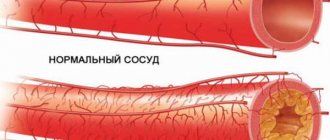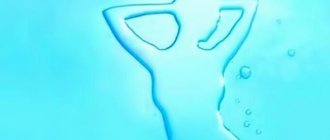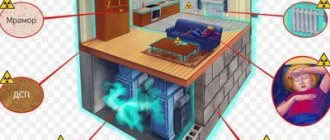Bleach poisoning can safely be classified as household poisoning. Moreover, it will not be difficult to guess what exactly caused the intoxication, since its symptoms are too specific.
Chlorine, also known as bleach, is used for household purposes in the form of powder, pressed tablets or liquid. Used for several purposes:
- whitewashing of premises (powder for dissolution in water);
- bleaching fabrics, clothes;
- water purification;
- cleaning and disinfection of premises.
Most cleaning products and detergents contain chlorine, hence their common name - bleach. The most common of these remedies is the well-known Whiteness.
Any chlorine-containing cleaning solution emits vapors with a strong pungent odor, which in most cases become the cause of poisoning.
How can you get poisoned by bleach?
Poisoning with chlorinated substances can have a very serious effect on the body. Moreover, in the absence of help or in case of severe intoxication, everything can end in the death of the victim.
You can be poisoned by bleach for several reasons:
- after inhaling its toxic fumes;
- in case of accidental ingestion (if the solution ends up in the hands of a child);
- when intentionally ingested (for the purpose of committing suicide);
- in cases of poison penetration through the skin.
Unintentional ingestion of chlorine can also occur in a swimming pool if the content of this disinfectant in the water significantly exceeds the norm. For the same reason, you should not drink raw tap water, especially if it gives off a distinct smell of chlorine.
You can inhale chlorine fumes if cleaning or disinfection is carried out in a room without ventilation, and if the rules for preparing the working solution are violated. Neglecting protective equipment can also cause bleach intoxication.
Yellow-green gas
This is exactly the color that chlorine has under normal conditions. It is a heavy gas with a pungent odor and unpleasant taste.
Chlorine is very common in nature - it is active and easily combines with a wide variety of substances. For example, ordinary table salt is nothing more than sodium chloride, that is, a compound of sodium and chlorine. This substance is necessary for all of nature and the human body - just in a certain form and in small quantities.
It is widely used in a wide variety of industries. We are more interested in its use in everyday life. Chlorine is part of bleach and disinfectants. Two of its properties stand out here: The ability to bleach almost any dye. But he does this in a solution with water. Technically, it is not chlorine itself that bleaches, but oxygen, which is formed when the mixture of chlorine and water breaks down. Ability to kill microorganisms and insects.
Clinical picture
If poisoned by caustic bleach vapors, the victim will experience:
- headaches;
- sharp painful cough due to sore throat and nasopharynx;
- dry mouth;
- redness of the sclera of the eyes, itching;
- a chemical burn of the mucous membranes of the eyes, sometimes leading to partial or complete loss of vision.
If bleach gets on your skin, the affected area will show:
- redness;
- irritation;
- development of dermatitis (in more severe cases).
Penetration of the solution inside threatens particularly severe manifestations:
- instant burn of the mucous membranes of the mouth, throat and all other digestive organs (and just one sip is enough for this);
- severe burning pain (due to bleach corroding the mucous membranes);
- vomiting with blood without relief after an attack (blood in the vomit indicates bleeding of the stomach and intestines due to burns);
- lack of air, suffocation (due to swelling of the throat);
- motor and mental overexcitation;
- sometimes - an increase in temperature;
- urine becomes dark brown due to toxic effects on the kidneys.
But all these are just general signs of bleach poisoning. Additionally, doctors distinguish several of its forms: mild, moderate, severe, rapid and chronic intoxication.
Light form
With mild poisoning, a person may experience:
- irritation of the mucous membranes of the mouth and respiratory tract (accompanied by a feeling of “scratching”, soreness);
- sharp cough;
- lacrimation;
- constant smell of chlorine even in clean air.
Advocacy
You will need a container with a wide neck, into which you need to pour water and leave for six hours. Bowls, basins, and buckets work well. You can leave it in a three-liter jar without a lid. In six hours, the liquid will be cleared of chloride compounds, but bacteria and microbes will remain in it. Therefore, the water will need to be boiled before use.
During settling, the chlorine disappears completely (Photo: I.ytimg.com)
During the settling process, a sediment forms: compounds of salts and heavy metals fall to the bottom. To collect purified water, you need to carefully drain about three-quarters from the container, and pour out the remainder with sediment.
First aid
First aid measures should be carried out immediately as soon as the victim feels a deterioration in their condition after contact with bleach. Delay after exposure to poison can cause death.
What to do if you are poisoned by bleach:
- Call an ambulance immediately (if the poisoning is moderate, severe, rapid, or children are poisoned);
- remove the patient from the room where he inhaled the vapors of the chlorine solution;
- if bleach gets inside, rinse the victim’s stomach and induce vomiting (for the child, if consciousness remains, also do gastric lavage and an enema);
- give activated carbon;
- the child can be given milk;
- rinse your mouth generously with a weak soda solution (the poisoned person should suck it in through the nostrils);
- if bleach vapor gets into the eyes, rinse with plenty of clean water or a weak soda solution (for children, after rinsing, you can drip lidocaine or a little vegetable oil);
- when the patient has inhaled vapors (stingling and coughing are observed) - give antitussive drugs for several days (if the degree of poisoning is mild and the victim remains at home for treatment);
- if a person has lost consciousness, bring a cotton swab with ammonia to his nose;
- If the poisoned person is not breathing, immediately perform mouth-to-mouth artificial respiration.
How is chlorine dangerous for people?
Due to its widespread use in industrial and commercial settings, exposure to chlorine can occur from an accidental spill or release, or deliberate action. The most harmful effects of chlorine come from inhaling chlorine gas. Problems may also occur from skin or eye contact with chlorine gas or from swallowing food or water containing chlorine.
Chlorine gas is heavier than air and initially remains in low-lying areas unless wind or other conditions are conducive to air movement.
Delicious recipe! Turkey in honey mustard marinade
Treatment
An antidote to chlorine-containing products has not yet been invented, so treatment for bleach poisoning will be carried out in other ways:
- intravenous hormones (Prednisolone, Dexamethasone);
- blood oxygen saturation;
- stabilization of blood composition;
- antibacterial therapy for mucosal lesions;
- restoration of acid-base balance;
- if necessary - mechanical ventilation;
- relieving pulmonary edema.
All these actions are carried out in the intensive care or toxicology department of the hospital and are aimed at improving the patient’s condition, as well as reducing the risk of consequences.
What to do if you are exposed to chlorine
If you have already encountered chlorine emissions, follow these steps:
- Quickly leave the area where you think you have been exposed to chlorine. If the outbreak was indoors, go outside.
- If you are indoors and there is a chlorine leak nearby outside, try to avoid contact with the chemical. Close and lock all doors and windows, turn off air conditioners, fans and heaters.
- Promptly dispose of items of clothing that may have chlorine on them to prevent additional exposure to the agent.
- Place the clothing in a plastic bag and close it tightly.
- Disposing of clothing in a sealed bag helps protect you and others from additional exposure to chlorine.
Possible immediate consequences
How severely poisoning will affect health depends on the route of entry of the poison, its dose and duration of exposure to the body:
- various skin diseases (after contact with bleach);
- decreased vision;
- accumulation of fluid in the lungs and subsequent swelling (after inhalation of vapors);
- brittle and dry nails, peeling skin (after frequent visits to the pool, if the water is too chlorinated);
- acute or chronic bronchitis, laryngitis, tracheitis, pharyngitis;
- sinusitis;
- pneumosclerosis;
- in older people (as a result of severe or chronic poisoning) - senile dementia.
All this may not happen if you work with chemicals hazardous to health and life in accordance with the rules of prevention.
Whiteness or...?
The simplest type of bleach for the home, “Belizna”, is a nondescript bottle known since Soviet times. It is still sold in any supermarket - it is the cheapest bleach. Of course, using this product you can be sure: not a single living creature will remain on the toilet, on the floor, or in the pipes! However, the spread of allergies and respiratory diseases force modern people to abandon bleach. A 100% refusal is impossible; for example, chlorine will continue to be used in public places. But at home, chlorine disinfectants can be replaced with:
- Vinegar and other acids.
- Alcohol.
- Hydrogen peroxide.
When purchasing products, choose a composition with active oxygen. There are products that contain guanidines - these substances are also quite toxic, although not to the same extent as chlorine.
Cleaning powders with chlorine are also a thing of the past. Many contaminants are removed with powders containing active oxygen and soda. There are many soft, creamy formulations on the market that clean surfaces well.
Don’t forget about technology: you can eliminate insects or disinfect surfaces simply by exposing them to high temperature. Clean with a steam cleaner - yourself or by inviting a specialist. The effect is the same, but without a single molecule hazardous to health!
Why is chlorine dangerous at home?
Millions of accidents and injuries occur each year in residential settings, and many are caused by exposure to toxic chemicals, particularly those found in bleach. Its composition may release chlorine gas, which is irritating to the respiratory system if inhaled. If you've ever used bleach to clean a bathtub in a confined space, you've probably experienced chlorine burn. Remember that chlorine is toxic enough to be considered a true chemical weapon and is classified as a respiratory arresting agent. Inhaling chlorine can cause difficulty breathing, chest pain, coughing, eye irritation, increased heart rate, rapid breathing, and even death. Snorting bleach or cleaning product for a long time will be a very traumatic experience. By the way, chlorine poisoning has recurring symptoms.
Is it necessary to remove cockroaches?
Cockroaches overwhelmingly evoke a disgusted attitude, many are even afraid of these insects - despite the fact that they rarely bite people, and it is difficult to blame them for damaging household property. They are busy eating up our food scraps, so a large number of Prussians is a sure sign that the owners have a wrong idea about the cleanliness and sanitation of the house.
Although there is just something to be afraid of. Due to their absolute food indiscriminateness, they penetrate into garbage disposals and sewers. From there, cockroaches bring on their legs and chitinous shell so many pathogens of such diseases (from dermatitis to tuberculosis) that they can scare any person who has the slightest understanding of infections. And besides, traces of their vital activity can cause an allergic reaction.
Therefore, it is imperative to get rid of cockroaches by selecting a remedy that would be effective in the fight against these prolific insects, and also, if possible, would not harm the indigenous inhabitants of the home.
Instructions for use
Above we looked at how to dilute bleach for disinfection. Now let's talk about how to use it. To wash floors and rinse dishes, use a weak solution, 0.5%. That is, half a liter of the original concentrate is diluted in a bucket of water. Previously, hospitals used it to disinfect hands. It was prepared simply, using 250 ml of concentrate per bucket of water. A 5% solution is used to wash floors and appliances in technical rooms. To prepare it, take 5 liters of a 10% solution per 5 liters of water.











